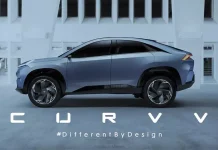2025 Porsche 911 Carrera Facelift
Set to debut soon, the 2025 Porsche 911, internally coded as the 992.2, is ushering in a new era of innovative enhancements while preserving the iconic heritage that has captivated automotive enthusiasts worldwide. From its inception as a 2020 model, the current 992-generation 911 has embodied Porsche’s relentless pursuit of performance and sophistication. Now, with the 2025 iteration, Porsche is poised to redefine excellence in the sports car category.
The updated 911 range promises subtle yet impactful exterior refinements, including a reimagined front fascia with potentially active vertical flaps, a modern integration of turn signals, and state-of-the-art headlight internals. The rear design hasn’t escaped the marque’s attention, boasting a contemporary taillight configuration and a strategically repositioned exhaust that hints at significant under-the-hood advancements.


Spy shots
Rumours are rife regarding the potential introduction of a larger, naturally aspirated engine, possibly mirroring the high-performing 4.0-litre flat-6 seen in the 718 range. This move isn’t just a nod to performance purists; it’s a strategic response to impending European emissions regulations, encouraging manufacturers to prioritize real-world fuel economy consistency. This transition is further complemented by the highly anticipated hybrid options, extending into the Carrera and Turbo variants, reflecting Porsche’s commitment to environmental sustainability and technological evolution.
Inside, the 911 is set to fuse tradition and modernity, featuring a larger infotainment display and a shift towards a fully digital gauge cluster, echoing the futuristic ambience of the Taycan. Yet, with the retention of its distinctive gear lever design, the 911 ensures continuity in its driving experience, a testament to Porsche’s dedication to its longstanding heritage.

With the 2025 model year update, the Porsche 911 isn’t just undergoing a transformation; it’s making a statement. It stands as a beacon of adaptability, embracing forthcoming automotive trends and regulations without compromising the quintessential elements that have etched the 911 into automotive history.
Let’s dissect the information to understand what these changes imply for potential buyers and Porsche enthusiasts.
- Exterior Styling Tweaks:
- The minimal changes to the 911’s iconic design are consistent with Porsche’s history of subtle, evolutionary design changes. Larger front intakes could indicate improved cooling, which might be necessary for potential power upgrades or hybrid system components.
- The integration of turn signals with the headlights is a modern touch that may enhance the vehicle’s aesthetic and aerodynamic efficiency.
- At the rear, the new taillight design and centrally positioned exhaust tips suggest a refreshed look, potentially making the vehicle more appealing to customers seeking the latest in design trends. The repositioned exhausts and new rear diffuser design might also hint at changes in the aerodynamics and performance character of the car.
Bigger engine
- Engine Updates and Rumors:
- The rumoured adoption of a larger, naturally aspirated engine, possibly the 4.0-litre flat-6 from the 718 range, marks a significant shift. If true, this could appeal to purists who favour the distinct response and sound of a naturally aspirated unit over turbocharged variants.
- The shift back to larger engines, as mentioned by Frank-Steffen Walliser, seems to be a strategic adaptation to new emissions regulations. It’s an interesting development, as it counters the industry’s recent trend of downsizing engines and relying on turbocharging. This change is likely aimed at achieving more accurate real-world fuel economy figures, reducing the discrepancy with lab-tested data.
Hybrid Option
- Hybrid Option:
- The introduction of a hybrid option, particularly in the Carrera and Turbo models, aligns with the automotive industry’s move towards electrification. This not only helps with emissions compliance but also caters to a growing segment of consumers seeking performance-oriented hybrids. This transition is crucial, considering global trends and regulations pushing toward reduced emissions and increased efficiency.
Revised dash design
- Interior Upgrades:
- Inside, the larger infotainment screen and fully digital gauge cluster indicate Porsche’s commitment to integrating modern technology and enhancing the user experience, drawing parallels with the tech-forward approach seen in the Taycan.
- The decision to retain the unique gear lever design suggests Porsche is maintaining certain brand-specific design elements, possibly to preserve a sense of familiarity and brand identity among its user base.
Overall, these updates suggest that Porsche is carefully balancing the introduction of new technology and design features with a commitment to its brand’s heritage and the driving experience that its customers have come to expect. The move towards more realistic emissions testing conditions, potentially ushering a return to larger engines, and the addition of hybrid options show adaptability in Porsche’s strategy, ensuring compliance with regulatory standards while still prioritizing performance and driving pleasure. These changes are likely to keep the 911 competitive and desirable in a rapidly evolving automotive market.





































